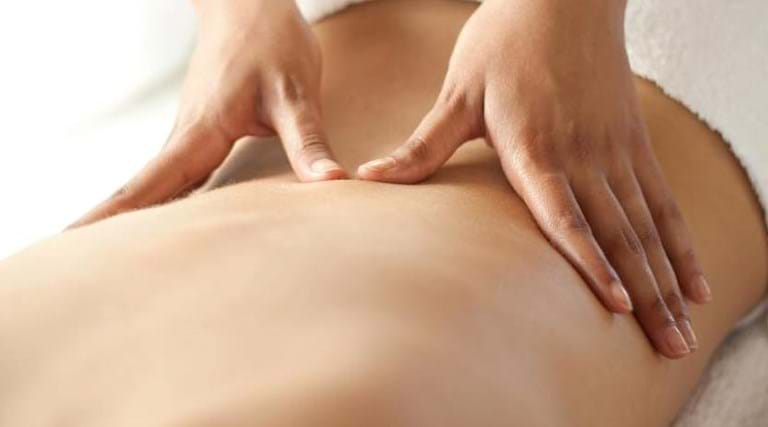Remedial Massage
Remedial massage provides a healing treatment that can be gentle or strong, deep or shallow. When muscles and tendons become damaged, impaired, knotted, tense or immobile, remedial massage provides an effective healing treatment.
Remedial massage holistically treats the whole body and traces the discomfort as far as possible back to the original cause, healing both the cause of the disorder as well as the symptoms.
What are the health benefits of Massage Therapy?
As well as assisting in the treatment of the above conditions, remedial massage has a positive impact on various systems of your body. These include:
Circulatory and Lymphatic Systems
Remedial massage encourages blood flow to the tissue being treated by stimulating the circulatory system. As the lymphatic system works in close proximity to the circulatory system, the massage will promote reduced pain and swelling by improving lymphatic flow.
Muscular
Remedial massage has a direct impact on the muscular system by stretching tight muscles, relaxing and releasing overused muscles, reducing spasms and muscular cramping, as well as assisting in tissue regeneration.
Endocrine/Hormonal
It has been proven that remedial massage can promote a decrease in cortisol, which is produced when we experience pain and stress. Massage also promotes an increased level of serotonin and dopamine, which improves your mood, relaxation and assists in relieving pain. This can also have a follow on effect by reducing anxiety, while enhancing sleep, concentration and energy levels.
Joints
By working on the muscles around a joint, remedial massage can increase joint range of motion and assist in increase in joint strength and stabilisation.
What are the common conditions that are treated?
Remedial Massage is effective in treating a wide range of conditions and ailments, such as, but not limited to:
Neck and back pain
Tension headaches
Jaw pain
Frozen shoulder
Arthritis
Sciatica
Tennis elbow
Plantar fasciitis
Stress
Muscular spasms
Muscle cramps
DOMS (delayed onset muscle soreness)
How long is a consultation?
The Initial first treatment lasts approximately one hour. A half-hour appointment allows time for a partial massage session, such as neck and shoulders, back or legs and feet. Depending on your presenting condition or pain location the massage therapist will advise either a 30 minute or 60 minute consultation.
What is involved in a consultation?
Your massage therapist will require you to fill out a health history form. Afterwards the therapist will begin by asking you general questions to establish what areas you would like worked on, if there are any conditions needing to be addressed and to determine if massage is appropriate for you. Your massage therapist may perform certain assessments and testing to evaluate your condition, and to see if you have any presenting complaints.
Will health insurance cover me?
Incididunt ut labore et dolore magna aliqua consectetur adipisicing elit, sed do eiusmod tempor. Ut enim ad minim veniam, quis nostrud exercitation ullamco laboris nisi ut aliquip ex ea commodo consequat. Integer pellentesque turpis sit amet purus feugiat auctor. Cras in metus sed justo eleifend porta. Sed consectetur dui erat, et aliquam erat aliquam vitae. Etiam iaculis, sapien in posuere varius, ante nunc consectetur tortor, non tempus mauris risus ac neque. Fusce venenatis elit ut sapien bibendum vestibulum. Nam sapien arcu, interdum vel consequat vitae, adipiscing vitae ligula. Integer posuere, tortor in consectetur congue, risus ipsum interdum ante, sed porttitor erat dui id diam. Donec ut mi pellentesque, imperdiet sapien sed, egestas ante. Reprehenderit in voluptate duis aute irure dolor in dolore eu fugiat nulla pariatur velit esse cillum.
What is Trigger Point Therapy?
A trigger point is a tight area within muscle tissue that causes pain in other parts of the body. A trigger point in the back, for example, may produce referral pain in the neck. The neck, now acting as a satellite trigger point, may then cause pain in the head. The pain may be sharp and intense or a dull ache.
How does a Remedial Massage help you?
Follow the instructions given to you by your therapist. After a remedial massage, I will regularly ask my clients to apply some heat and drink plenty of water. I may even give them some stretches to do in order to keep the treated muscles relaxed. It is important though, to listen to the instructions given to you at the conclusion of your treatment.
As well as assisting in the treatment of the above conditions (question 3), remedial massage has a positive impact on various systems of your body. These include:
Circulatory and Lymphatic Systems
Remedial massage encourages blood flow to the tissue being treated by stimulating the circulatory system. As the lymphatic system works in close proximity to the circulatory system, the massage will promote reduced pain and swelling by improving lymphatic flow.
Muscular
Remedial massage has a direct impact on the muscular system by stretching tight muscles, relaxing and releasing overused muscles, reducing spasms and muscular cramping, as well as assisting in tissue regeneration.
Endocrine/Hormonal
It has been proven that remedial massage can promote a decrease in cortisol, which is produced when we experience pain and stress. Massage also promotes an increased level of serotonin and dopamine, which improves your mood, relaxation and assists in relieving pain. This can also have a follow on effect by reducing anxiety, while enhancing sleep, concentration and energy levels.
Joints
By working on the muscles around a joint, remedial massage can increase joint range of motion and assist in increasing joint strength and stabilisation.
What should I do after a massage?
Follow the instructions given to you by your therapist. After a remedial massage, I will regularly ask my clients to apply some heat and drink plenty of water. I may even give them some stretches to do in order to keep the treated muscles relaxed. It is important though, to listen to the instructions given to you at the conclusion of your treatment.
